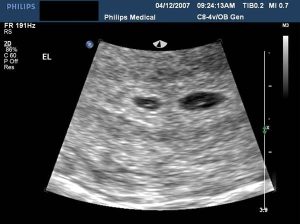
Course Overview:
This comprehensive course delves into the complexities of monochorionic/diamniotic twin pregnancies, focusing on the critical aspects of twin-to-twin transfusion syndrome (TTTS), chorionicity determination, and advanced sonographic techniques. The curriculum is designed to equip healthcare professionals with in-depth knowledge and practical skills for managing these high-risk pregnancies effectively. With a blend of theoretical understanding and case-based learning, participants will explore various aspects of TTTS, including its pathophysiology, diagnostic criteria, and evolving therapeutic strategies. Enroll now, or continue to read more about this course.
Key Features of Twin-To-Twin Transfusion Syndrome Course:
- Explore the 15% incidence of TTTS, its underlying vascular anastomoses, and the resultant perinatal mortality and morbidity risks.
- Master the techniques for determining chorionicity and amnionicity using transvaginal sonography, crucial for the subsequent management of twin pregnancies.
- Gain insights into sonographic markers such as nuchal translucency, amniotic fluid discrepancy, placental cord insertion, and inter-twin membrane folding.
Earn ACCME Category 1 PRA Credit:
Course Benefits:
- Learn to apply this knowledge in clinical settings, improving patient counseling and management strategies.
- Earn 1 AMA PRA Category 1 ™ credits.
- Professional Development
Who Should Enroll:
Course Duration:
Enroll Now:
Join our expert-led course to enhance your expertise in managing monochorionic/diamniotic twin pregnancies. Enroll now to gain invaluable insights and practical skills to improve patient outcomes in high-risk twin pregnancies.
